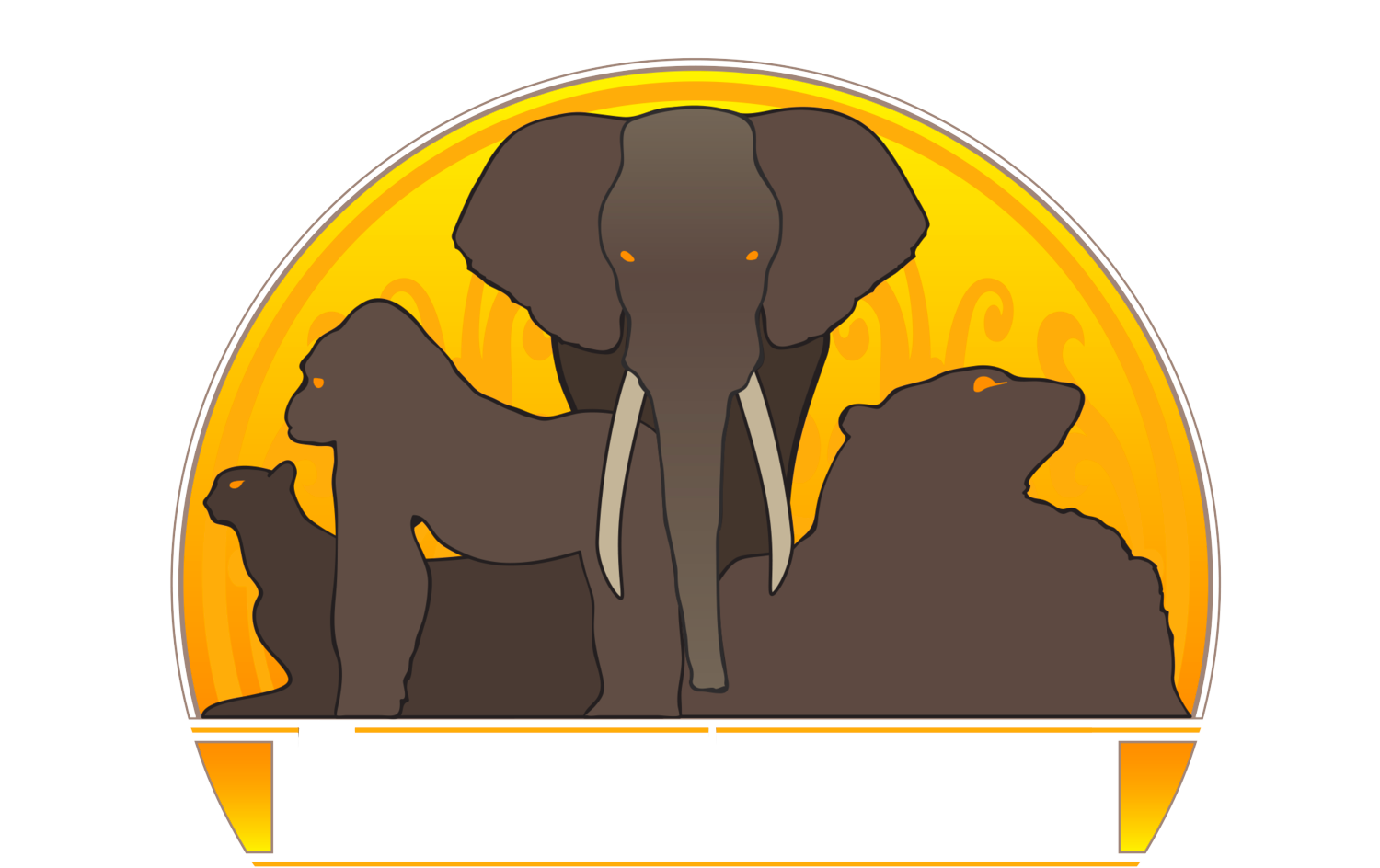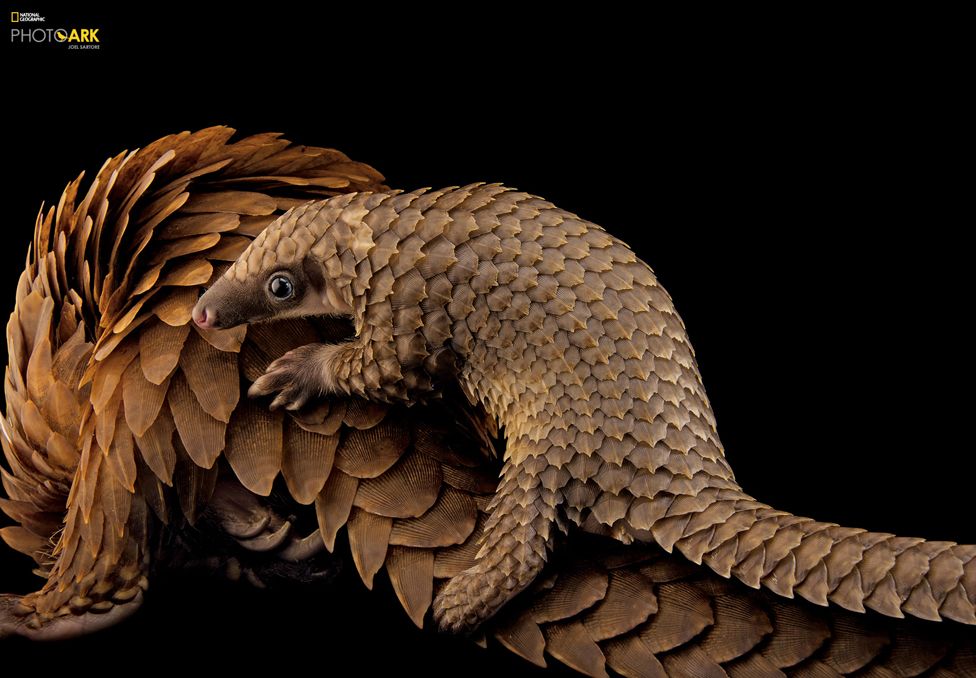Photo by Adrian Stern
The most trafficked mammal in the world you may have never heard of.
It is one of 10 animals that Sir David Attenborough would put on his personal ark, HE calls them ‘one of the most endearing animals I have ever met’, and it is not hard to see why they inspire such affection. It is 80 million years old (Homo sapiens is a mere eight). It eats 200,000 ants and termites a day. It has a (sticky) tongue almost as long as its body and stores stones in its stomach to grind up food. These delightful creatures are gentle, and agile, and have an eclectic group of ancestors.
There are eight species of pangolin, which are often erroneously confused with aardvarks and anteaters (though long-tongued pangolins mostly live on the same foods, ants and termites). They’re defined by the neat layer of plate-like scales made of keratin over their body, which protects them. The only soft part is their underside, as with tortoises. Pangolins are the only mammal known to have these particular scales. Mostly solitary, pangolins only really meet up with each other to mate, and babies are raised over a period of about two years. African pangolins tend to give birth to one child at a time, while Asiatic ones can produce three at a time. They have poor vision, relying on their other senses, but they’re competent swimmers, and they share a common ancestor with hedgehogs, bats, horses, camels and whales. Their closest relatives, however, are the Carnivora, like cats (big and small), dogs, bears and seals.
Their lovely name comes from the old Malay word pengguling, meaning ‘one who rolls up’. Some species use their tails to hang from trees, too. Pangolins live in Africa and Asia, in hollow trees or burrows, depending on the habitat. They prefer sandy soils and can be found in woodlands and savannas that are within reach of water. Deforestation has destroyed their homes in many areas. Since 2014, pangolins have been on the Red List of endangered creatures. Four of the eight species are classified as vulnerable, two are endangered, and the last two are critically endangered. Conservationists are unable to successfully breed them in captivity as they tend to develop pneumonia and ulcers as a result, before dying early.
When threatened it rolls itself up into an armour-plated ball that protects it from all known predators. Except, unfortunately, humans. They simply pick up the balls and take them away – on such a scale that pangolins have become the world’s most trafficked mammal. THIS Large-scale trafficking is driven by a belief in pangolins’ magical and curative properties and a demand for their meat (being a popular African bush meat and traditional medicine in both Africa and Asia) and their scales. When mixed with bark from certain trees, the scales are thought to neutralize witchcraft and evil spirits. If buried near a man’s door they are said to give an interested woman power over him. The smoke from their scales is thought to improve cattle health, keep lions away, and cure ailments like nose-bleeds. Although their scales are just made of keratin—the same substance that makes up human hair and nails—they are in high demand in certain Asian countries where the scales are believed to cure illnesses ranging from cancer to asthma, and their meat is considered a delicacy. In some areas, tribes believe a pangolin sighting indicates there will be a drought and the only way to prevent it is by killing the animal. Pangolin scales have also been used to create armour in past centuries.
Because of the Illegal Wildlife Trade, Animals - both dead and alive - are being bought and sold on an industrial scale as food, pets, medicines and even ornaments.
The trade affects a huge range of species from great apes to helmeted hornbills, but arguably none more so than the pangolin.
For each of these trafficked animals, money changes hands - across the palms of corrupt officials, between those involved in the trade on the ground and on the internet. Although impossible to calculate precisely, the illegal wildlife trade has been valued at somewhere between $7bn (£5.4bn) and $23bn (£17.6bn) a year.
The pangolins are caught in their forest lairs with nets or snares or dogs.They are smuggled into Vietnam by land from Laos, or by ship to Haiphong port – dead and alive, fresh and frozen, gutted, skinned, disguised as fish or snakes and in loads weighing as much as 20 tons. They are then spirited in lorries, trains, buses, taxis and even ambulances to Hanoi or Ho Chi Minh City, or on to China where they command even higher prices than in Vietnam. Before selling them the traffickers frequently pump their stomachs full of gravel or rice starch, or inject water between their scales and flesh, to increase their weight and hence their value. Sometimes traffickers are caught but seldom because of assiduous policing. Moreover a legal loophole allows the police to sell some confiscated pangolins on the open market and to keep the proceeds. The police have even been known to sell pangolins back to the very traffickers they seized them from.
The Duke of Cambridge and The United For Wildlife (UFW) have launched a Financial Taskforce in October of 2018. It is crucial for the finance sector to work together in order to put a stop to illegal wildlife trade for good. Last year the IUCN’s newly formed pangolin specialist group published a detailed action plan. Baillie is now trying to persuade children’s writers and artists to popularise the animal, and in November the Duke of Cambridge brought his star power to bear by launching a version of the Angry Birds game featuring pangolins.
But Scientists and activists say the number is still shrinking fast. If you assume only 10% to 20% of the actual trade is reported by the news media, the true number of Pangolins trafficked over a two-year period is 116,990 to 233,980, according to Annamiticus, an advocacy group. It is estimated that more than a million pangolins have been snatched from the wild in the past decade. And No one knows how many pangolins are left in the wild.
As the Duke of Cambridge noted recently, ‘The humble pangolin... runs the risk of becoming extinct before most of us have even heard of it.’
Please spread the word about these remarkable creatures and donate towards their survival.
Below is a list of charities and more specialists groups that help.
The International Union for Conservation of Nature is an international organization working in the field of nature conservation and sustainable use of natural resources.
Photography by Joel Sartore
IUCN SSC Pangolin Specialist Group
is a voluntary network of experts from around the world including field biologists, social scientists, zoologists, veterinarians, ecologists and geneticists, all of whom are actively involved in pangolin research and conservation.The Pangolin Specialist Group’s mission is to: To work within the framework of the IUCN SSC to secure a future for wild pangolins through advancing knowledge on pangolin status, threats and conservation priorities, and by catalysing action to conserve them.
Johannesburg Wildlife Veterinary Hospital NPC
is a dedicated wildlife ONLY veterinary hospital in Johannesburg, South Africa. #keepingitwild Many people would question why we need another non-profit wildlife organization. Their Wildlife NPC is a first of its kind. It funds a wildlife veterinary hospital that exclusively treats indigenous wildlife, free of charge. The biggest difference is that they treat medium and small wildlife – most of the current NPOs fund conservation efforts focus on large wildlife i.e. rhino, elephant and lion. Smaller indigenous wildlife is often overlooked. Our hospital treats, rehabilitates and releases these animals back into the wild. Some of the species we treat include: bats, owls, raptors, mongoose, PANGOLIN, meerkat, serval, genet, hedgehogs, bush babies, garden birds, water birds and otter. All treatment of wildlife is free of charge.
works to tackle illegal wildlife trade by bringing together conservation organizations, governments, and global corporations. Led with The Duke of Cambridge and The Royal Foundation, United for Wildlife is working to protect endangered species like elephants, rhinos, tigers and pangolins so they can share our world with future generations.
is a nonprofit project whose mission is to conserve pangolins by transforming relationships between people and pangolins. We aim to inspire people to conserve them, change behavior that drives the illegal trade, and increase the capacity of conservation on the ground where pangolins live. Save Pangolins provides expertise and leadership in coordinating global pangolin conservation efforts and runs campaigns that engage the public and generate funds for conservation. Save Pangolins drives support to conservation efforts in pangolin range states and raises public awareness of pangolins around the world.
is a nonprofit organization (under it’s parent organization, Zoological Conservation) whose is dedicated to promoting the conservation, education, and research of Pangolins.
The African Pangolin Working Group (APWG) was established on 27 June 2011, following an inaugural meeting by a diverse group of people who all have one passion in common – understanding and protecting pangolins in Africa.
The APWG’s objectives are encompassed by its mission statement: “The African Pangolin Working Group will strive towards the conservation and protection of all four African pangolin species by generating knowledge, developing partnerships and creating public awareness and education initiatives.”
The IUCN SSC Pangolin Specialist Group
is a voluntary network of experts from around the world including field biologists, social scientists, zoologists, veterinarians, ecologists and geneticists, all of whom are actively involved in pangolin research and conservation.
They are an advisory body to IUCN and currently have around 100 members from 25 countries around the globe.
The Pangolin Specialist Group was re-established in February 2012 in recognition of the widespread threats to pangolins globally and to address the lack of understanding of the species and their conservation needs.
Some Children’s Books
A Pangolin Tale: Adventure of the Armored Anteater
P is for Pangolin: an alphabet of obscure, endangered & under-appreciated animals
Other sites with information on Pangolins and how to help.
IUCN SSC Pangolin Specialist Group
Tikki Hywood Trust, Pangolin Men
IUCN-SSC Pangolin Specialist Group
African Pangolin Working Group
Angkor Centre for Conservation of Biodiversity (ACCB) in Cambodia
Conservation International-Cambodia
MENTOR-POP (Progress on Pangolins)
Save Vietnam’s Wildlife (Carnivore and Pangolin Conservation Program)


